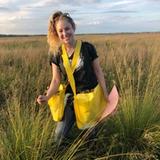Many of the flying, crawling, wiggling bugs we encounter in our yards are there for a reason. Whether they're critical pollinators for our lawns and gardens, provide natural pest control by eating more harmful bugs, or contribute to healthier soils—most of them are pretty great.
However, there are some harmful biting, sucking, and stinging pests that we’d rather not encounter one-on-one.
Guide to outdoor insects & pests
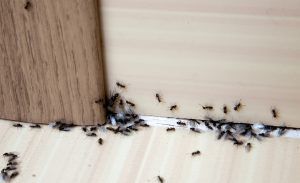
Ants
Quick ID
- Less than 1/10 of an inch
- Dull brown color
- Funky blue cheese smell when crushed
- No obvious node on the waist
Where are they found
Nationwide, both indoors and outdoors.
Type of damage
In landscape and house perimeter, a nuisance ant that will form trails inside the home
Prevention
Remove landscape features like borders that encourage nests (wood, rocks, slate)
Removal
This ant is difficult to manage even with pesticides. The best way to eliminate colonies is to use baits that are brought back to the nest and shared. Liquid insecticide applications may kill foraging ants, but may not have a measurable impact on the colony.
Sunday Pest Control:
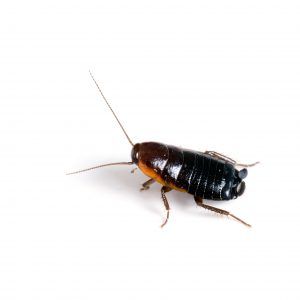
Oriental cockroach
Quick ID
- About 1 inch in size
- Long and dark brown to black, shiny
- Males have short wings, females have very short wings
- Long antennae
- Distinct cerci, or paired appendages on the rear
Where are they found
Nationwide found mainly around structure perimeters and areas with moisture and sanitation issues (basements, bathrooms, drains, sewers, and landscapes). Has become naturalized as far north as NY, which means it lives outdoors and overwinters.
Type of damage
Sanitation pest that feeds on food spillage and organic waste—including feces, which is why they're associated with broken sewer lines). Possible mechanical vector of pathogens (meaning they can transfer pathogens from one location to another on their bodies).
Prevention
- Can enter buildings from the perimeter or through pipes.
- Prevent them from entering the structure with door sweeps or weather stripping.
- Monitor with sticky traps indoors.
- Remove food/water sources and reduce moisture.
- Reduce hiding spots (cardboard, bags, piles of plant debris, clutter).
- Trim shrubs or remove ground covers from the perimeter of the building to reduce hiding spots.
Removal
Perimeter treatment of building and landscape will help to eradicate the pest outdoors.
Sunday product:
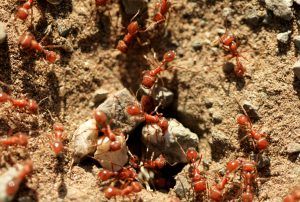
Red imported fire ants
Quick ID
- Bright red
- Workers consist of many sizes between to ¼ inch
- Waist has two distinct nodes (bumps between second and third body sections)
- Mounds of soil no more than 18 inches in diameter
- Small red ants flood out when disturbed and will inflict multiple painful stings
Where are they found
Found in southern U.S. in lawns and landscape.
Type of damage
Beware of mounds! Fire ant stings cause pain and small welts on the skin. Fire ants will also form mounds in the lawn reaching all the way 18 inches in diameter.
Prevention
No cultural control recommendations.
Removal
Baits are preferred to kill fire ants—they collect the bait and then share it within the entire colony.
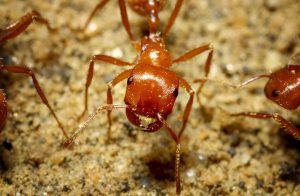
Harvester ants
Quick ID
- Workers range in size from ¼ - ½ inch
- Orange to red or brownish-black
- Waist has two distinct nodes
- Midsection has one pair of spines on the top (most species)
- Many species have long hairs on their head forming a "beard"
Where are they found
Found across the U.S. except the northeast. Usually live within the lawn or landscape, and will leave large bare spots in lawns.
Type of damage
Beware of mounds! Harvester ants are capable of stinging and stings cause pain and small welts on the skin. The presence of harvester ants will also cause bald patches in the lawn.
Prevention
No cultural control recommendations.
Removal
Baits are preferred to kill harvester ants. Similar to fire ants, they collect the bait and then share it within the entire colony.
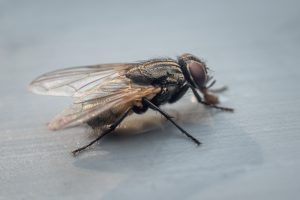
House flies
Quick ID
- Adults are ⅕ inch long
- Four longitudinal stripes on their thorax (body segment behind the head)
- Abdomen (last segment) is variable in color, from yellowish to gray
Where are they found
Nationwide. Outdoors, flies are common where food is prepared and consumed, in areas of poor sanitation, or around feces. Indoors, can be found where food is prepared and consumed if windows and doors are left open.
Type of damage
House flies are a nuisance pest and potential mechanical vectors of human pathogens. This is because they feed on things like pet feces and decaying garbage and then transfer pathogens to food items and to food preparation surfaces.
Prevention
- Window screens and keeping doors closed is the best way to prevent indoor problems with flies.
- Insect light traps are used indoors to intercept flies that may be pulled in, and fly tape is available too for locations where food is not prepared.
- The most important prevention step is source reduction: eliminate decaying organic vegetation such as piles of grass clippings, wet garbage left out for more than a week, piles of pet feces, etc. These are all breeding sources for flies, which can reproduce rapidly in warm months.
Removal
Flies can be spot treated to kill them, but the same effect can be achieved with the use of a fly swatter or fly traps.
Sunday Product:
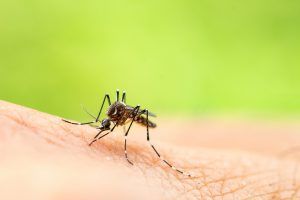
Northern house and Asian tiger mosquitoes
Quick ID
- Northern house mosquito
- Brown
- Less than ½ inch
- Bites at dawn and dusk
- Asian tiger mosquito
- Black and white
- ½ inch
- Bites during the day
Where are they found
Nationwide. Mainly found outdoors in the yard and garden.
Type of damage
Biting mosquitoes are capable of transmitting species-specific pathogens. Some are container breeders, able to reproduce in tiny amounts of water as small as a soda bottle cap. Others breed in standing water found in tree holes, puddles, bird baths, gutters, toys, and other areas where stagnant water is found around the yard.
Prevention
- Dump standing water outside.
- Inspect and clean out gutters and bird baths regularly.
- Look for hidden standing water, including tarps, toys, planters, trash, recycling, and gutter drain extenders.
- Keep grass mowed and trim landscape plants to reduce shade and moisture.
Removal
If breeding sites are eliminated by removing standing water, treatments may not be needed.
Sunday product:
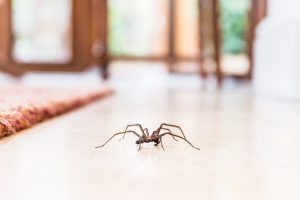
Spiders
Note: Of greatest concern are venomous spiders, such as black widow, hobo, wolf, and brown recluse spiders.
Quick ID
- Eight legs
- Two body parts (cephalothorax and abdomen)
- No more than 3-inch leg span (fishing and wolf spiders and 1 inch long bodies)
Where are they found
Nationwide. Usually found on the first floor, basement, and perimeter. If outdoors, usually found in landscaping.
Type of damage
Potential for bites, especially with wolf spiders, but generally an aesthetic pest that causes fear.
Prevention
- Vacuuming or sweeping behind, above, and under isolated spaces tends to deter spiders.
- Reduce clutter and food sources for other insects that act as food for spiders.
- Reduce moisture in the perimeter landscape to reduce all arthropod activity.
- Simplify perimeter landscape to reduce hiding spaces.
Removal
In the case of gathering spiders and their hatching eggs, a vacuum cleaner with a bag is the best defense. Vacuum and immediately move vacuum outside, remove bag into a trash bag, close and dispose of promptly.
Sunday product:
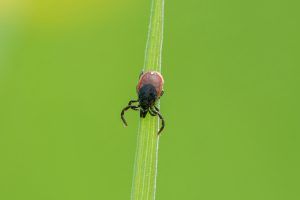
Ticks
Quick ID
- Teardrop shape
- Black legs and a round scutum (the hard section behind a tick’s head)
- Females have a red abdomen
- Found under shrubs, along the edges of and inside wooded areas
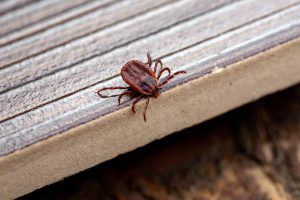
Lone star tick (Amblyomma americanum)
- Reddish-brown
- Found-shape with long mouthparts
- Females have a white spot
- found in lawns, tall grass, and shrubs
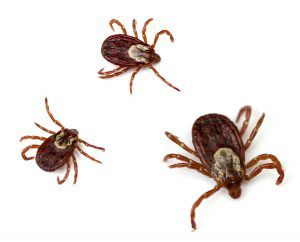
American dog tick (Dermacentor variabilis)
- Males have a mosaic pattern against a dark brown body
- Females have large off-white, patterned scutum against a dark brown body
- Short mouthparts
- Found in wooded edges, lawns, and closer to homes
Where are they found
Nationwide but regional species differences.
Type of damage
Blood-feeding ectoparasites capable of transmitting species-specific pathogens to people, dogs, and possibly cats.
Prevention
- Determine what tick species might be present on the property by considering the habitat of the home or check tick distribution maps available from the CDC.
- Woods and the wooded edge is habitat for Blacklegged ticks that need moisture
- open fields, roadways, etc. are prime habitat for lone star and American dog ticks, which are tolerant of dry areas.
- Homeowners can survey for ticks using a drag cloth.
- Tick Checks 101:
- First, check your clothing and outdoor gear! Ticks hide in folded areas, near belt loops and around your boots and socks.
- Check your entire body for ticks. We recommend checking all the joint regions (knees, elbows, armpits) and all areas near your hairline. Ticks love these spots!
- You’re probably dirty from spending all that time outside right? A good way to thoroughly tick check is to just take a shower and check yourself head to toe. Plus, ticks really give us that creepy crawly feeling anyways—don’t they?
- Finally, make sure to check and remove ticks from your furry friends after spending time outside. Bonus tip? Use tick and flea collars or vet recommended topical applications to prevent ticks to begin with!
Sunday Tip:
If you find ticks on clothing, you can tumble dry gear and clothing for 10-15 minutes on high heat to kill the ticks.
Removal
Crack and crevice treatment where ticks are found and where pets sleep using an appropriately labeled product.
Sunday product:
Prevent outdoor insects & pests
Preventing insects and pests from your outdoor spaces is the next step to managing them. Once you have a population under control, adjust yard management, and then try to only rely on chemicals as a last resort.
- Know what they like. Determine the type of habitats, locations in the yard, and perimeter areas near the home the pests live in or frequent.
- Detection. Look around your yard - lawn, garden, patio, piles of debris - basically anywhere you’ve previously noticed a pest.
- Correctly ID the pest. Identify the insect using the vetted identification resources so you know what you’re up against. Keep scrolling for this!
- Monitor. Monitor the areas where you manage insect and insect-like pests and track changes (pest presence) over time.
Learn more
Find out all you need to know about the pest to ensure you can manage the pest effectively. Use our guide below or check out the following resources:
Cited sources
Integrated Pest Management (IPM) Tactics. Penn State University.
Integrated Pest Management (IPM). NC State Extension.
New York State Integrated Pest Management. Cornell University IPM.
What Is Integrated Pest Management? UCANR. Penn State Extension.
Where Ticks Live. CDC.

